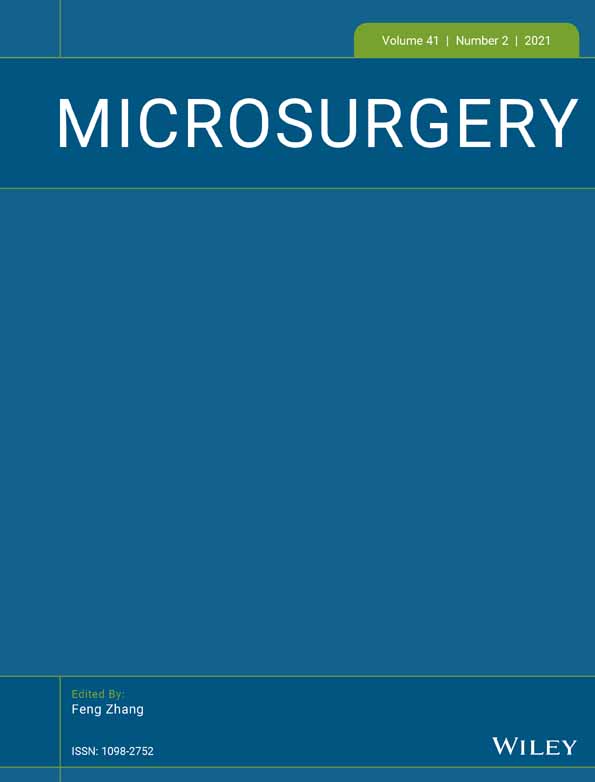Superficial temporal artery perforator flaps for reconstruction of intraoral defects
Abstract
Background
Intraoral defects after tumor resection are often reconstructed with free tissue transfer. However, in patients who are not good candidates for free tissue transfer, regional flaps based on the superficial temporal artery can be utilized. The authors present our technique to reconstruct intraoral defects with the superficial temporal artery perforator (STAP) flap and early outcomes.
Methods
Five patients underwent STAP flaps for defects including the hard palate, buccal sulcus, floor of mouth, and retromolar trigone between 2017 and 2019. The mean defect size was 5.6 × 3.4 cm2 (3 × 3 cm2 – 7 × 4 cm2). The mean age was 74 (57–88) and all patients had recurrent cancer. External Doppler, indocyanine green laser angiography, and FLIR thermal imaging were used intra-operatively to identify the best perforators and plan for flap design.
Results
The mean flap size was 7.6 × 3.5 cm2 (6 × 3 cm2 – 10 × 5 cm2). Four flaps were based off of the posterior branch of the STA, while the fifth was based off of the anterior branch. Two donor sites were closed primarily, and three required skin grafts. One patient experienced partial flap necrosis. There were no complete flap losses and no donor site complications. Average follow up was 14.6 months (9–20 months). All patients maintained preoperative level of speech, mastication, and oral continence.
Conclusions
The STAP flap can be based on the anterior or posterior branch of the superficial temporal artery and is a useful regional flap for intraoral defects after tumor resection.
CONFLICT OF INTEREST
The authors declare no potential confict of interest.




